
VFX Artist Resume: A Comprehensive Guide With Examples
Apr 08, 2025 5 Min Read 1736 Views
(Last Updated)
Landing a job as a VFX artist is no small feat in today’s competitive creative industry. In this modern era, even an advertisement requires VFX so the job role of a VFX artist is as demanding as a software role.
Now comes your question, how to get this role? Your resume is the first step to showcasing your talent. A strong VFX artist resume doesn’t just list your qualifications, it tells a compelling story about your skills, experience, and passion for visual effects.
In this article, we’ll break down everything you need to know about building a professional VFX artist resume, from essential sections to expert tips, ensuring that your application stands out and gets noticed by recruiters and hiring managers. So, without further ado, let us get started!
Table of contents
- What to Include in a VFX Artist Resume?
- Contact Information
- Professional Summary
- Skills
- Professional Experience
- Education
- Certifications
- Projects
- Awards and Achievements
- Portfolio or Demo Reel
- Final Tips for Structuring Your Resume
- Why Does VFX Artist Resume Matter?
- It's Your First Impression
- It Highlights Your Unique Skills
- It Tailors Your Experience to the Role
- It Shows Your Career Journey
- It Demonstrates Professionalism
- Example of a Well-Crafted VFX Artist Resume
- Conclusion
- FAQs
- What makes a VFX artist resume stand out?
- How important is a demo reel in a VFX resume?
- Should I include personal projects on my VFX resume?
- How can I tailor my VFX resume for a specific job?
- Can I use a creative design for my VFX resume?
What to Include in a VFX Artist Resume?
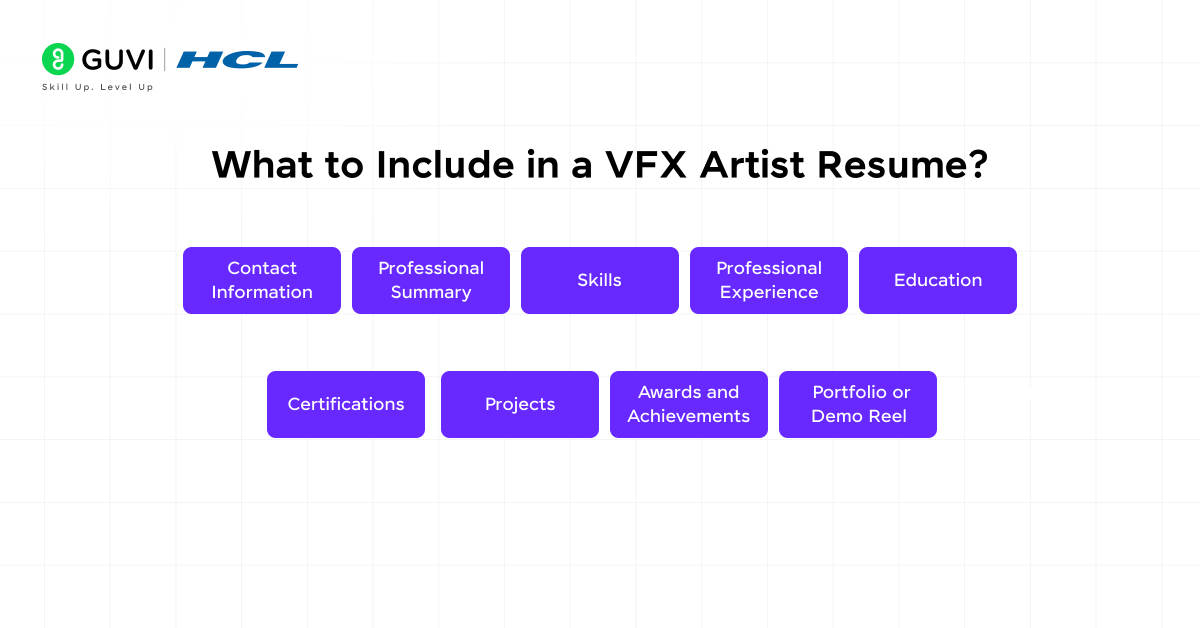
Your VFX artist resume is your chance to showcase your technical expertise, creativity, and professional journey in a clear and compelling way.
It should include sections that highlight your skills, experiences, and accomplishments while keeping the information relevant to the job you’re applying for.
Here’s a detailed breakdown of what to include and how to structure your resume effectively.
1. Contact Information
Start with the basics, make sure the recruiter can reach you easily. Your contact information should include:
- Full Name: Use your real name or professional name.
- Phone Number: Ensure it’s a number you actively use.
- Email Address: Use a professional email address (avoid anything overly casual).
- Portfolio or Demo Reel Link: This is essential for VFX artists. Include a clickable link to your portfolio or demo reel showcasing your best work.
- LinkedIn or Social Media (Optional): If you have a professional LinkedIn profile or an Instagram account dedicated to your VFX work, include those too.
Example:
John Doe
johndoe@email.com | (123) 456-7890 | johndoereel.com
LinkedIn: linkedin.com/in/johndoe | Instagram: @johndoevfx
2. Professional Summary
This section acts as your elevator pitch. It’s a 2–4 sentence summary that introduces you to the recruiter, highlights your expertise, and emphasizes why you’re a great fit for the role.
- Focus on your years of experience, key skills, and notable achievements.
- Tailor it to the specific job you’re applying for.
Example:
“Detail-oriented VFX artist with 5+ years of experience creating cinematic visual effects for feature films and television. Proficient in Maya, Houdini, and Nuke, with expertise in 3D modeling, particle simulations, and compositing. Successfully contributed to two award-winning films and is renowned for delivering high-quality effects under tight deadlines.”
3. Skills
The skills section should be a mix of your technical and soft skills. Highlight the tools and techniques you excel at, as well as interpersonal skills that make you a great team player.
Technical Skills:
- Software Expertise: Maya, Blender, Houdini, After Effects, Nuke, ZBrush, Photoshop.
- Techniques: Particle simulations, rotoscoping, texture mapping, lighting, rigging, 3D modeling, compositing, rendering.
Soft Skills:
- Creativity
- Attention to detail
- Problem-solving
- Team collaboration
- Time management
Example:
- Software: Maya, Houdini, Nuke, After Effects, Blender
- Techniques: Particle simulations, compositing, rotoscoping, rendering
- Soft Skills: Creativity, team collaboration, time management
4. Professional Experience
Your work history is the heart of your resume. List your experiences in reverse chronological order (most recent first). For each position, include:
- Job Title: Your role (e.g., Visual Effects Artist, Compositor, 3D Artist).
- Company Name: The studio or organization you worked for.
- Location: City and state (or indicate if remote).
- Dates of Employment: Month and year of start and end dates.
- Responsibilities and Achievements: Use bullet points to describe your role and contributions. Focus on accomplishments and quantify them when possible.
Example:
Visual Effects Artist
DreamWorks Animation, Los Angeles, CA | Jan 2020 – Present
- Designed and implemented particle effects for three feature films, contributing to two box-office hits.
- Collaborated with directors and animators to create seamless visual effects for action sequences.
- Optimized rendering processes, reducing project timelines by 15%.
Freelance VFX Artist
Self-Employed, Remote | Jan 2018 – Dec 2019
- Developed high-quality VFX for independent films, enhancing cinematic quality.
- Produced promotional videos for local businesses, integrating motion graphics and 3D effects.
5. Education
Your educational background provides a foundation for your technical and creative skills. Include:
- Degree and Major: Specify your degree and area of study (e.g., Bachelor of Fine Arts in Animation & Visual Effects).
- Institution Name: The university, college, or academy you attended.
- Graduation Year: Include the year you graduated (or expected graduation date if still a student).
Example:
Bachelor of Fine Arts in Animation & Visual Effects
Academy of Art University, San Francisco, CA | 2016–2020
6. Certifications
Certifications validate your expertise with industry-standard tools and techniques. Include certifications that are directly relevant to the VFX industry.
Example:
- Adobe Certified Expert (After Effects)
- Autodesk Certified Professional (Maya)
- Houdini FX Artist Certification
7. Projects
Highlight key projects to demonstrate your experience and creativity. Mention your role, the project name, and the outcomes or impact.
Example:
“Echoes of Time” | Freelance VFX Artist
- Designed and integrated realistic time-manipulation effects into live-action footage.
- Used Houdini and Nuke to create atmospheric effects, earning recognition at a local film festival.
8. Awards and Achievements
If you’ve received awards or recognition for your VFX work, include them here. It’s a great way to showcase your accomplishments and credibility.
Example:
- Winner of Best Visual Effects at the Indie Film Awards (2021).
- Contributed to an Academy Award-nominated film for Best VFX (2020).
9. Portfolio or Demo Reel
While this isn’t a section on your resume, it’s essential to mention it prominently. Your demo reel should showcase your best work and demonstrate your technical and creative skills. Ensure the link to your reel is easy to access and up to date.
Final Tips for Structuring Your Resume
- Use a Clean Layout: A simple, professional design ensures your resume is easy to read.
- Tailor It to the Role: Customize your resume for each job application by emphasizing relevant skills and experiences.
- Keep It Concise: Ideally, your resume should fit on one page without compromising important details.
- Proofread: Attention to detail is critical in VFX—an error-free resume reflects your professionalism.
By including these sections and tailoring your resume to the role, you can effectively showcase your skills and experiences, making a strong impression on potential employers in the competitive world of visual effects.
Why Does VFX Artist Resume Matter?
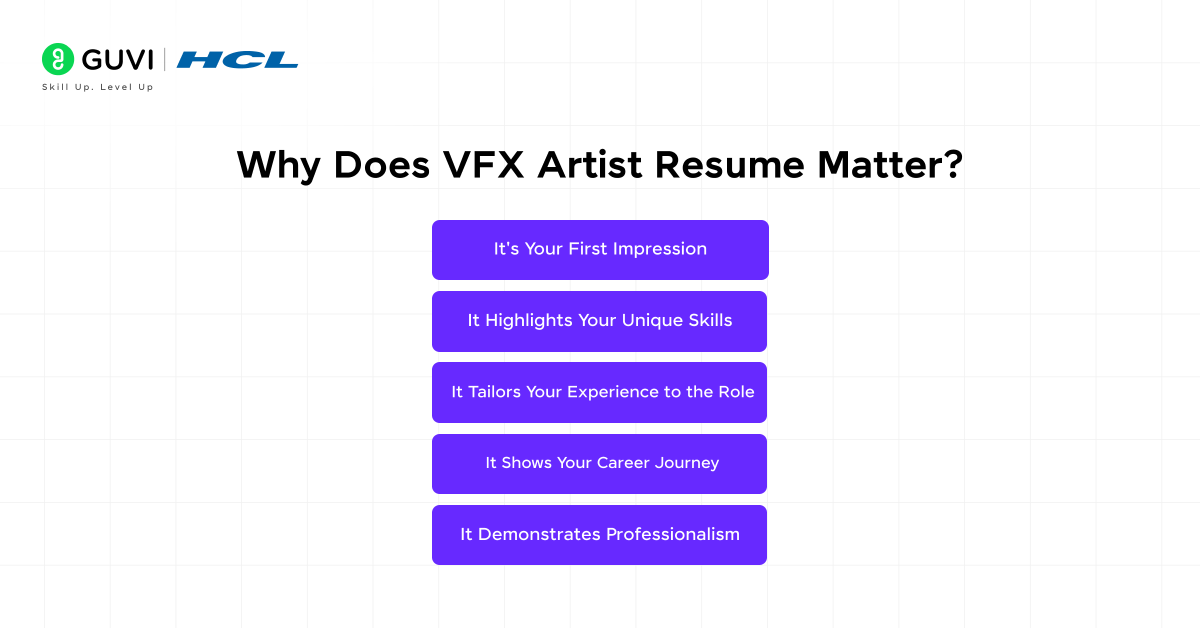
Your VFX resume is not just a formal document, it’s your first introduction and a visiting card to potential employers, collaborators, and clients in a highly competitive and creative industry.
While your portfolio or demo reel may showcase your technical skills, your resume communicates your professionalism, work ethic, and relevance to a specific role. Here’s why a VFX artist resume matters and how it can make or break your chances of landing a dream job.
1. It’s Your First Impression
In the VFX industry, recruiters and hiring managers often sift through dozens or even hundreds of applications for a single position.
Your resume is typically the first thing they see, and it determines whether they’ll move forward to check out your portfolio or demo reel. A well-structured, concise, and visually appealing resume shows that you take your craft seriously and respect their time.
2. It Highlights Your Unique Skills
VFX is a blend of art and technology, and employers need to know that you can handle both sides of the equation.
Your resume is where you can highlight your proficiency in industry-standard software, specific VFX techniques (e.g., particle simulations, compositing, motion tracking), and any unique skills that set you apart.
3. It Tailors Your Experience to the Role
Every VFX project has its own requirements. A video game studio might prioritize real-time rendering skills, while a film production company could be looking for expertise in photorealistic effects. Your resume allows you to tailor your experience and skills to match the specific job description.
4. It Shows Your Career Journey
Your resume tells the story of your professional growth. Employers want to see where you’ve been, what projects you’ve worked on, and how you’ve developed your skills over time.
Highlighting roles, achievements, and progression builds a narrative that demonstrates your reliability and commitment to the industry.
5. It Demonstrates Professionalism
VFX is a detail-oriented field, and your resume is a direct reflection of your ability to produce polished work. A clean, well-organized resume suggests that you’re meticulous, professional, and capable of meeting industry standards.
No matter what, a VFX artist’s resume matters a lot because it’s often your gateway to the opportunities you’re aiming for. A well-crafted resume shows that you’re organized, thoughtful, and ready to contribute to the team.
Example of a Well-Crafted VFX Artist Resume
If you want to learn VFX through a step-by-step process guided by an actual VFX mentor, consider enrolling in GUVI’s Adobe Certified VFX Course with AI Integration that not only teaches you everything about VFX, but also provides you with an industry-grade certificate!
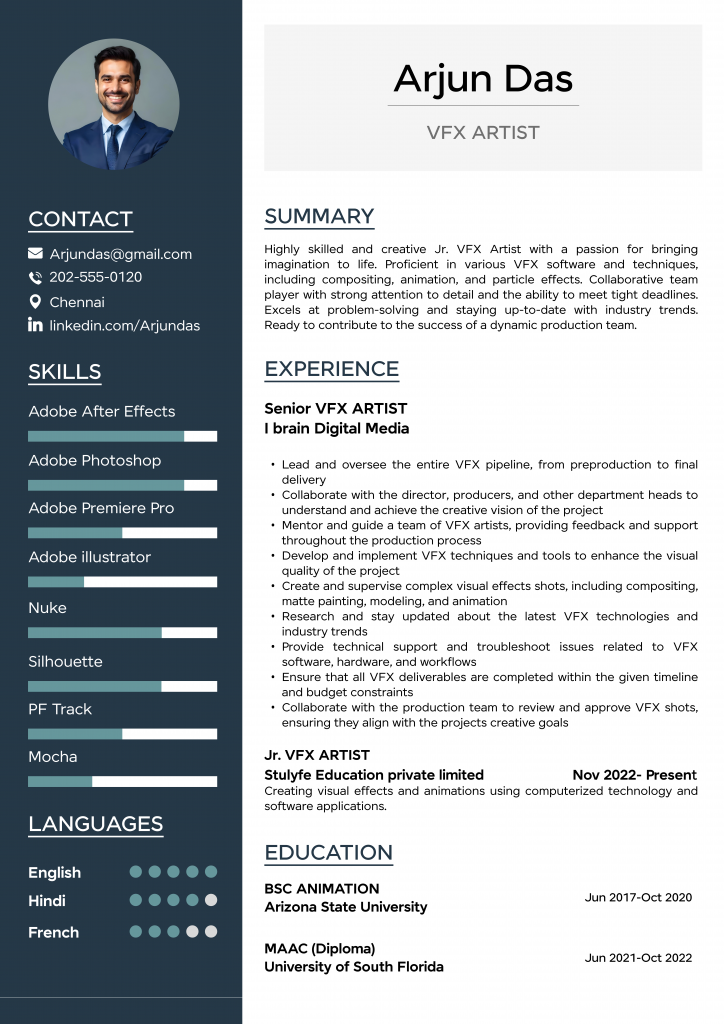
Conclusion
In conclusion, a VFX artist resume is more than just a formality, it’s a representation of your artistic journey and technical expertise.
By including key elements such as a strong professional summary, relevant skills, detailed experience, and an eye-catching portfolio link, you can present yourself as a well-rounded candidate ready to tackle the challenges of the VFX industry.
Remember to tailor your resume for each application, ensuring it aligns with the specific needs of the job and company.
FAQs
A standout VFX artist resume effectively balances creativity and professionalism. It highlights relevant technical skills (e.g., Maya, Houdini, After Effects), showcases major projects, and provides a clear link to your demo reel or portfolio. Tailoring your resume to the job posting is also key.
Your demo reel is critical—it’s often the first thing recruiters look at after your resume. It showcases your technical and creative skills, so ensure it’s polished, concise, and highlights your best work. Don’t forget to include a clickable link to your reel in your resume.
Yes, especially if they demonstrate your skills or fill gaps in professional experience. Personal projects can show initiative, creativity, and versatility. Be sure to describe your role and the techniques or software you used in the project.
Study the job description carefully and emphasize the skills, software, and techniques mentioned in it. Adjust your professional summary, key skills, and project details to align with the company’s needs while keeping your content authentic to your experience.
While a visually appealing design is fine, ensure it remains professional and easy to read. Avoid overloading the design with graphics or colors that distract from the content. Your creativity should shine through your portfolio and demo reel, not just the resume design.






















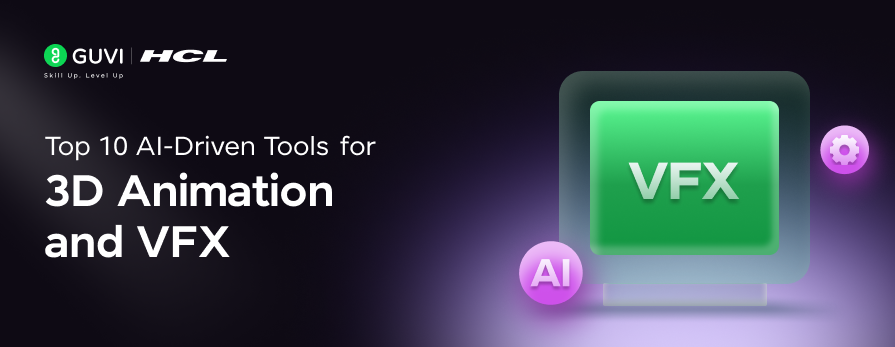


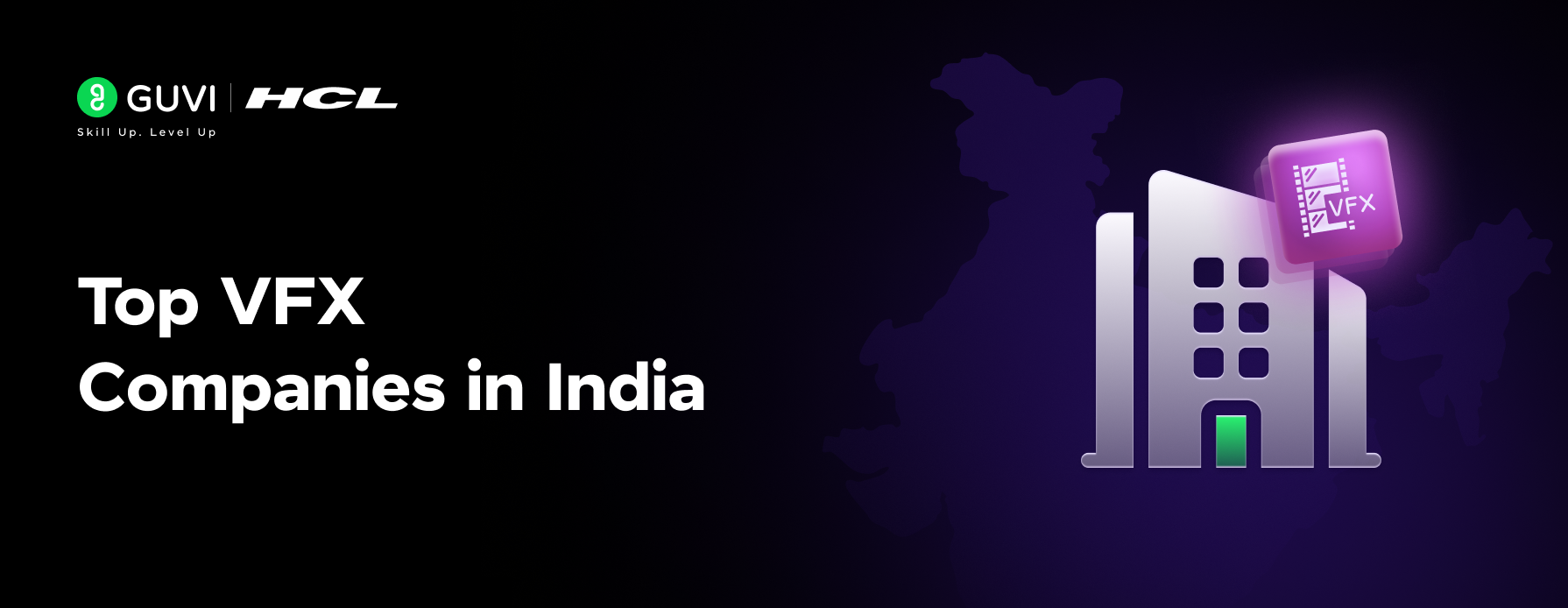
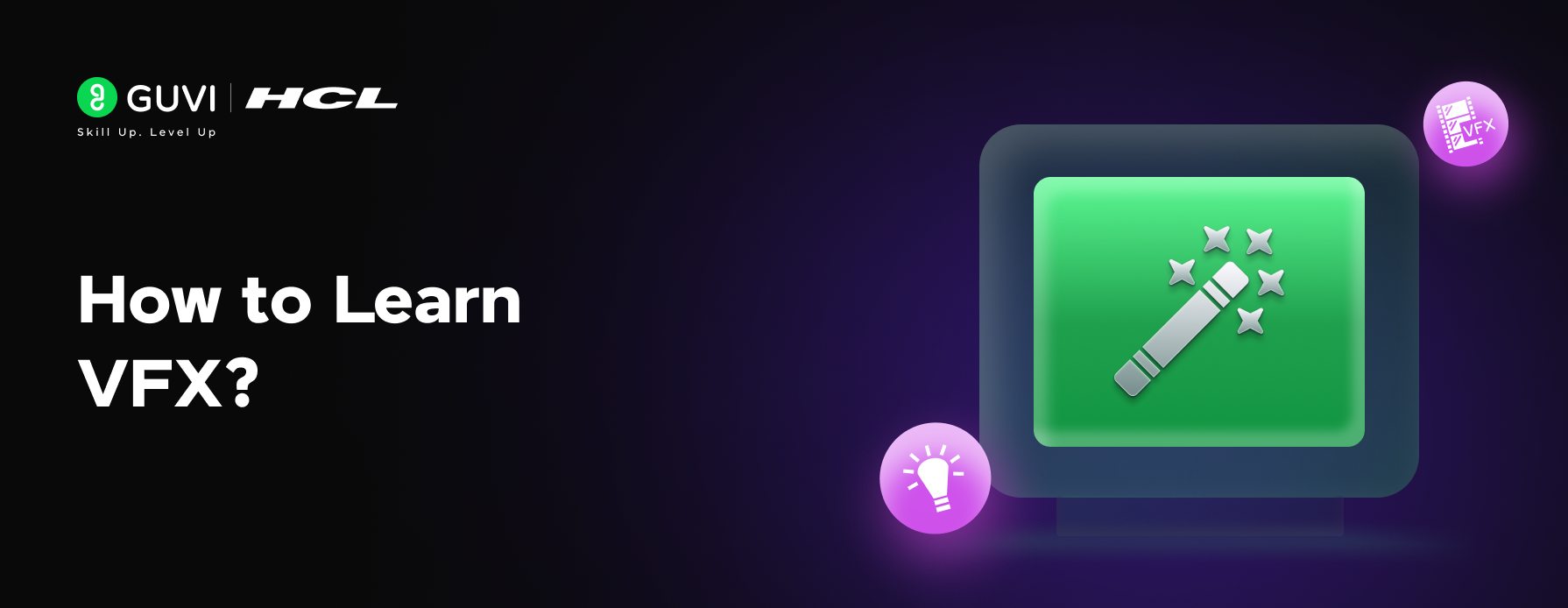
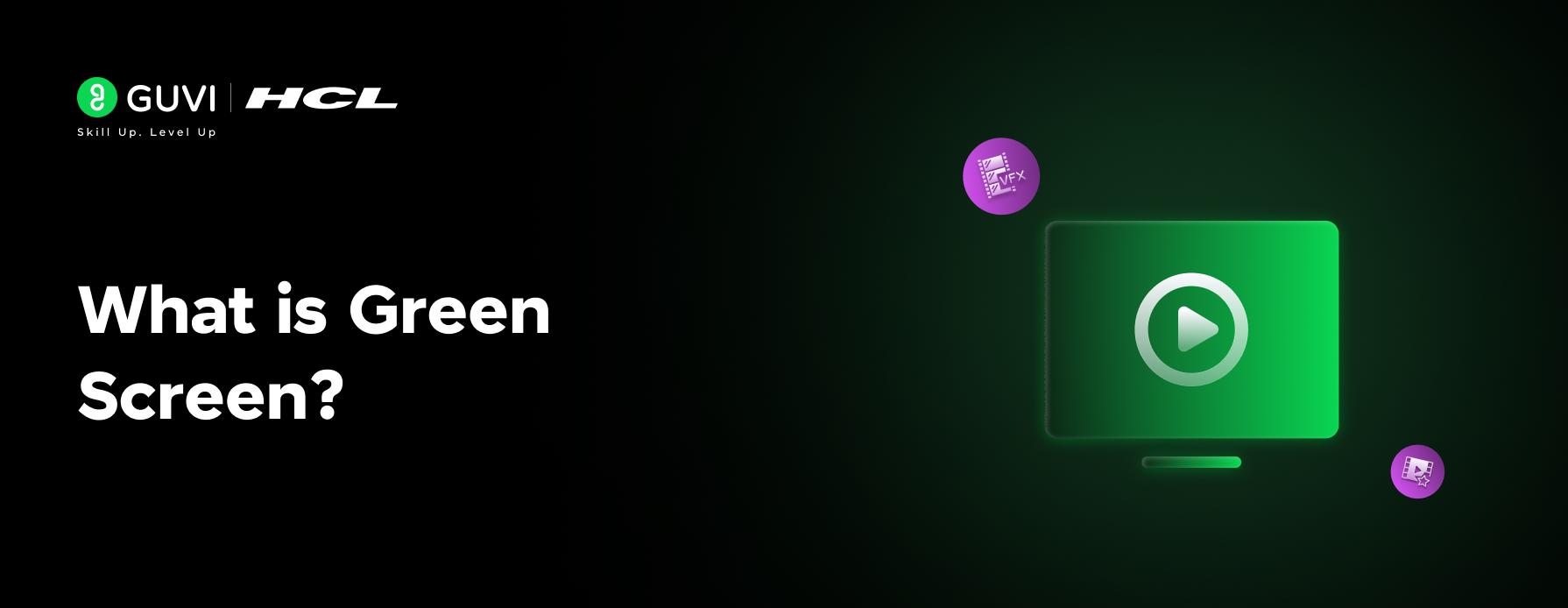
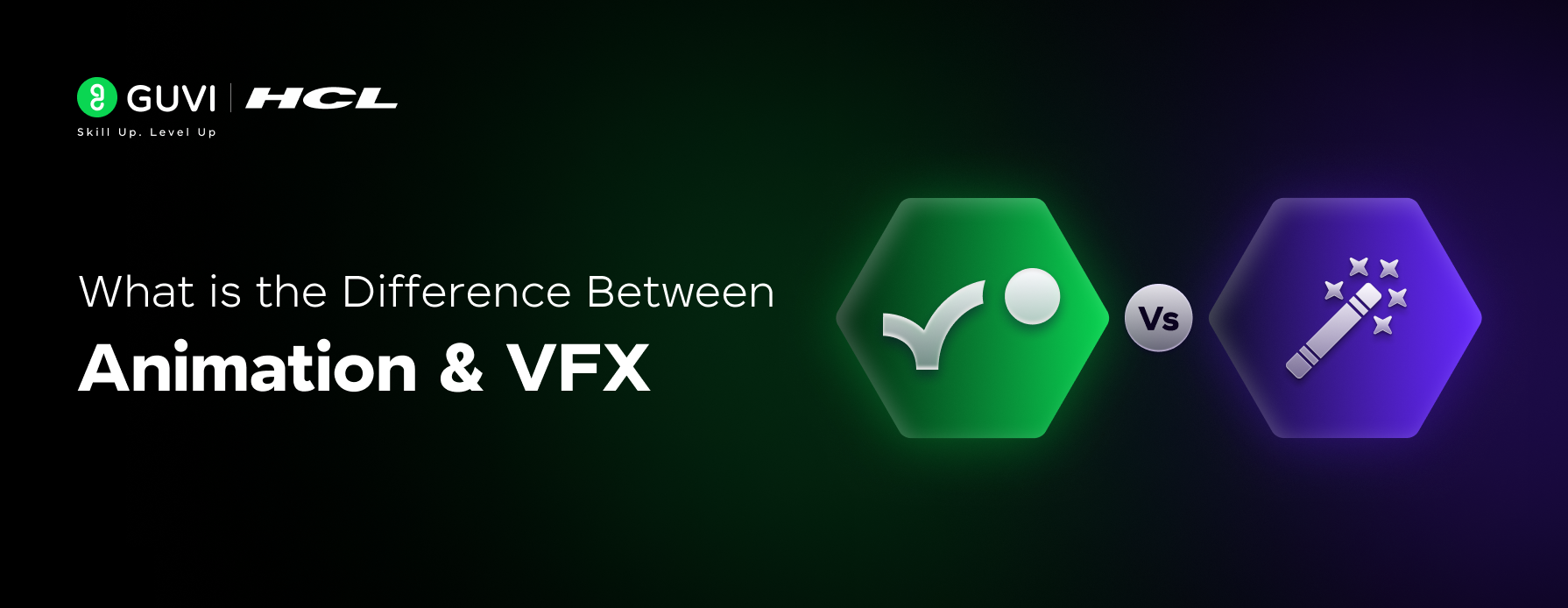
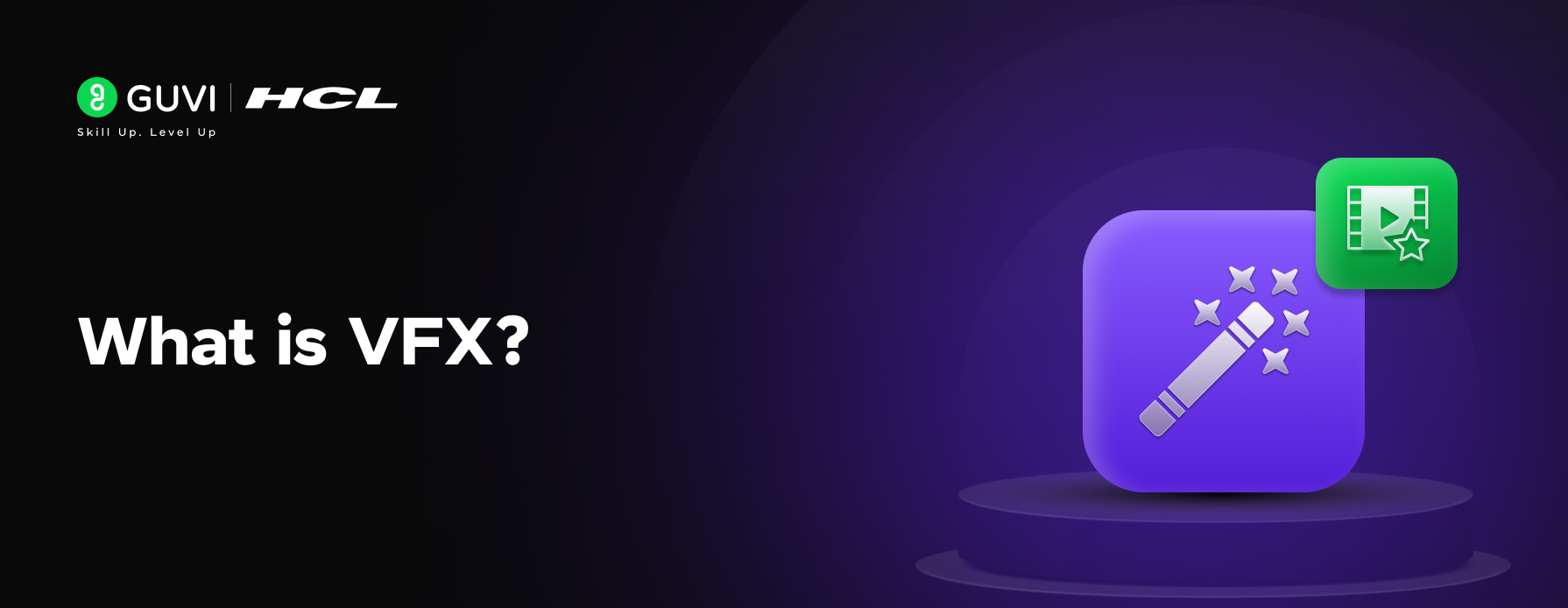

Did you enjoy this article?